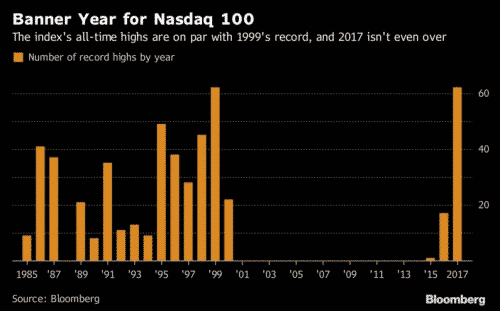Overbought
“I had to cover my shorts.” That’s what my friend Matt told me after the company came out with its quarterly earnings and issued upbeat projections. I asked Matt, “how long are you going to keep shorting these companies. This is like the 10th time you’ve been forced to cover.”
I don’t remember anymore how Matt responded. But I do know he was later proved right to be wary. The company he was shorting in October 2000, Juniper Networks, had just reported earnings that were double year ago levels, and on strong revenue growth. The stock was up briskly on the news – eclipsing the $200 a share level. And Matt had to cover. But just one year later, when revenue was flat, beating expectations and causing the stock to soar 23%, the stock had already lost more than 90% of its value.
So how do you play this? I mean Matt was 100% right. And ironically, because we were working at an Internet company that seemed to us like total smoke and mirrors, we knew Matt’s scepticism made sense. But he was also early. And there was a lot of pain to endure until Juniper and stocks like it gave way.
I’m reminded of this story this morning by my Twitter feed. One story from Pedro da Costa talks about soaring household debt. And another tweet from Brian Klaas talks about putting nuclear-armed bombers on 24-hour alert. Yet Holger Tschaepitz notes the 15th consecutive gain for the Japanese Nikkei 225, a record streak. And James Crombie talks of record junk bond issuance in Europe.
It was when Joe Weisenthal tweeted about record highs in the Nasdaq 100 that I thought of Matt’s shorting Juniper back in October 2000. Here’s Joe’s chart:
So how do you play this? Just last week I was telling you that there are zero signs of economic recession coming in the data. The one data series I like the most says the jobs market is stronger today than it was a year ago, 9 years into this expansion. So there’s no obvious economic break to stop the market freight train. And let’s not forget that it was 196 when Alan Greenspan mused aloud about “irrational exuberance”. The markets continued higher for another 4 years.
If you look at a chart of Juniper Networks, the October timing was actually spot on. The stock went from a close of $122.81 on 23 Jun 2000 to a closing peak of $219.08 on 26 Sep 2000, two weeks before Matt was forced to cover. After the earnings, it went to an all-time closing high of $230.96 on 16 Oct 2000. After that, the bottom fell out and it never recovered. The stock trades at about $26 a share today, 17 years later.
There are a lot of metrics showing that markets are on a tear right now – whether you look at stock market cap to GDP, P/E ratios, Shiller P/E ratios, high yield spread to treasuries, Corporate bond spread to treasuries or whatever metric you use. What stops this tear from continuing and asset prices from rising further still? Short of a 1987-style crash, you have to believe that the economic data lead the markets. And by that I mean that there are few times – if any – you get an extended bear market run in the face of positive economic data. As long as the economy holds, even stretched valuations can be substantiated. It’s only when the economic data soften that things start to fall apart.
That doesn’t mean that some sectors of the market won’t get crushed first though. Back during the housing bubble, I started to buy puts on a number of housing related companies like KB Homes and Washington Mutual. WaMu eventually went bust but KB Homes – the former Kaufman & Broad, a major junk bond issuer in the Milken days – is still alive and well. Shares peaked in July of 2005 with home prices and have never recovered. Today’s price is only 1/3 of the July 2005 high.
This quote from Wikipedia is noteworthy about the housing bubble period:
In November 2006, KB Home president, CEO, and chairman Bruce Karatz resigned after an internal accounting probe into his alleged backdating of stock options. KB Home also announced the resignation of its head of human resources, Gary A. Ray, and the resignation of its chief legal officer, Richard B. Hirst. The company determined that Karatz and Ray had picked grant dates under the company’s stock option plans. According to the Wall Street Journal, Karatz was one of the most highly paid executives in 2005, earning almost $156 million, primarily from options.
My take: it pays to have a grounding in macro because it helps understand economic turns that drive large falls in asset prices. Yet, at the same time, it also pays to do bottoms up research and hone in on sector analysis to shift asset allocation. The housing stocks were telling you in 2005 that something was wrong. It wasn’t until 2007 that a broader economic downturn developed. Right now, no sectors are screaming downturn; the economic data remain firm. But the grind higher in these markets cannot go on forever. Risk assets are overbought and we should be attuned to a potential shift in fortunes because some of these high fliers are the Junipers of 2017. And you don’t want to own them when the reversal comes.

Comments are closed.